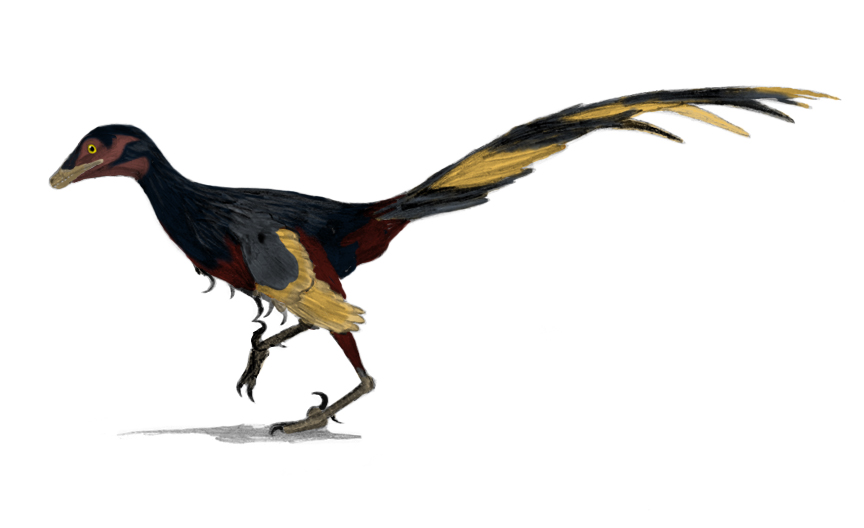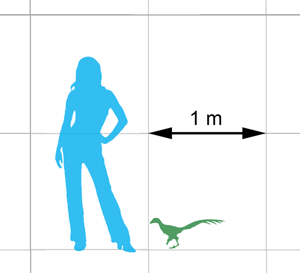home > natural history
Jinfengopteryx elegans
"elegant golden phoenix feather"

Described in 2005 as a new genus of archaeopterygid, Jinfengopteryx was later identified as a troodontid (though the later family may need to be sunk into the former eventually anyway...), more closely related to things like Sinovenator, Byronosaurus, and Mei than to Archaeopteryx. Whatever the specific family, it certainly has an appropriate name. From an aesthetic standpoint, Jinfengopteryx is probably one of the most beautiful fossils there is, right up there with Archaeopteryx and Microraptor. There's nothing like a tiny theropod with exquisite plumage impressions in various hues that let you see what the bird looked like in life better than any run of the mill pile of bones (even equally impressive piles of bones like Mei, which have near-perfect articulation but lack soft tissue remains, like feathers and skin). Jinfengopteryx even had what the authors describe as small, yellow-ish, oval-shaped objects in its gut. These are probably not eggs, and may actually be seeds, remains of the bird's last meal, that lend support to the idea that troodontids were at least partial herbivores.
In this drawing, I've tried to accurately reflect the plumage of Jinfengopteryx. In the fossil, the hands are folded back against the body, making it impossible to distinguish what the wing feathers were like, so I took an educated guess and made them like smaller versions of Archaeopteryx wings (Jinfengopteryx arms are much smaller, so the wings were probably reduced). Unlike microraptorine dromaeosaurids and Archaeopteryx, Jinfengopteryx lacked any long feathers on the hind legs (troodontids in general have longer, probably more specialized legs than other primitive birds). I've given it darker body plumage to reflect the black outline of the anterior part of the fossil, though I'm not completely sure if that's feathers or a preservational artifact. The dark bands on the tail also reflect coloration in the fossil. Some have described the tail feathers as a "bottle brush", but it's probably just a flattened-out Archaeopteryx-like tail.
Jinfengopteryx was about 55 cm long, not counting the feathers. It lived in China during the Early Cretaceous Period, during the same time span as the late Yixian fauna.
For more on Jinfengopteryx, see the Wikipedia article I helped edit.
Image License:
Creative Commons Attribution 2.5
You are free to Share (transmit, copy, and distribute) and to Remix (adapt or modify) the images on this page Under the following conditions: You must Attribute the work by giving written credit to Matt Martyniuk and linking to this Web site: http://www.azhdarcho.com (but not in any way that suggests that they endorse you or your use of the work).
For any reuse or distribution, you must make clear to others the license terms of this work. The best way to do this is with a link to this web page.Any of the above conditions can be waived if you get permission from the copyright holder. Nothing in this license impairs or restricts the author's moral rights.
DESCRIPTION
Length: 55cm (1.8ft)
(70cm/2.3ft incl. feathers)
Weight: 0.3kg (10.5oz)
Location: Huajiying Formation, Hebei, China
Time: Aptian age, Early Cretaceous (122Ma)
CLASSIFICATION
Kingdom: Animalia
Phylum: Chordata
Class: Stem-Aves
Family: Troodontidae
Genus: Jinfengopteryx
Species: J. elegans
SYSTEMATICS
Sauropsida
Diapsida
Archosauria
Ornithosuchia
Dinosauria
Theropoda
Coelurosauria
Maniraptora
Troodontidae
